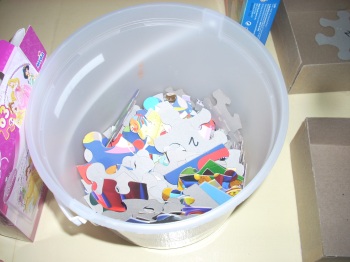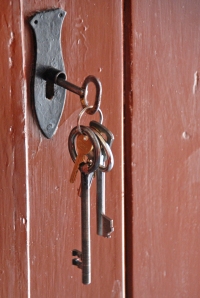
Spencer has too many toys! He gets them from his parents, his friends, his Auntie Mim and Uncle Fred, Grandma Bobo, Poppy and Grandiddy. He gets them at school, at the dentist, at the doctor, and at the drive-thru.
The Spencer I’m talking about is the character in David Shannon’s fantastic read, Too Many Toys . Though the similarities between the Spencer in the book and my own little guy with the same name is so eerie, there are times I wondered if David Shannon might have been in our home recently as part of an undercover research mission. This might as well have been a custom-made book!
Spencer’s mom (both the real one and the fictional one) finally has had enough with all those toys! But when she suggests getting rid of a few, Spencer (both the real one and the fictional one) resists, hesitates, and negotiates. Finally, they whittle down the toy supply, which is when Spencer discovers that the very best toy he has is his own imagination.
I picked up this book as I was shopping for the “something to read” portion of our kids’ Christmas list. Our family has been David Shannon fans for a while now, reveling in the David series as well as Alice the Fairy and the Trucktown series he collaborates on. His stories are always clever, funny, and portray childhood in a way few can. So the familiar cover illustrations staring up from the bookshelf were quick to catch my eye. A few page flips in and I was sold!
It helped that just a few days before picking up this book, I was having a very serious discussion with my boys about why no one could actually get every single toy in the world for Christmas…even if they were the very most well-behaved children in the history of mankind. Couple that with the main character’s name and the all-too-familiar request to thin out the toy collection, and this book buy was a no-brainer. This one will certainly be sitting under the tree at our house this Christmas, and I’m quite sure it will be a frequent favorite at storytime as well.
If you too can relate a little too well with Spencer’s mom and dad (both the real ones and the fictional ones) Check out this guestpost by Mandi Ehman of Life…Your Way at Blissfully Domestic for Decluttering and Organizing Children’s Toys. Thinning the toys before Christmas can be helpful. I have friends who have had great success with their children sorting out their toys to make donations to those less fortunate and others who finally had success only when they promised their children all procedes from their contributions to the family yard sale. At my house….for now we operate on the “hide it in the trunk of the car for a few weeks, and if no one asks for it, drive it on down to the donation center” method. It may not be perfect, but it seems to maintain everyone’s sanity.




